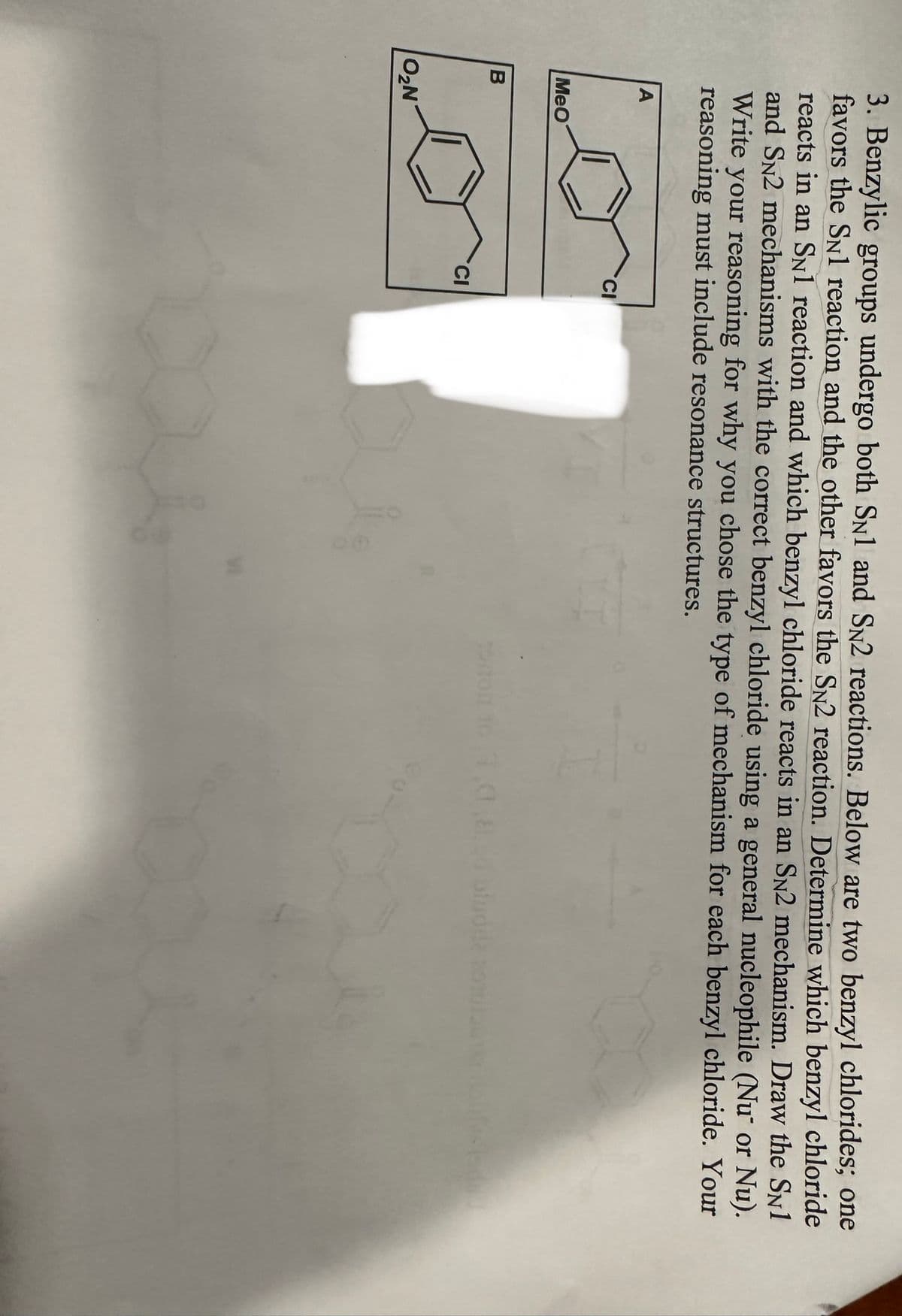3. Benzylic groups undergo both SN1 and SN2 reactions. Below are two benzyl chlorides; one favors the SN1 reaction and the other favors the SN2 reaction. Determine which benzyl chloride reacts in an SN1 reaction and which benzyl chloride reacts in an SN2 mechanism. Draw the SN1 and SN2 mechanisms with the correct benzyl chloride using a general nucleophile (Nu or Nu). Write your reasoning for why you chose the type of mechanism for each benzyl chloride. Your reasoning must include resonance structures. MeO B O₂N CI CI
3. Benzylic groups undergo both SN1 and SN2 reactions. Below are two benzyl chlorides; one favors the SN1 reaction and the other favors the SN2 reaction. Determine which benzyl chloride reacts in an SN1 reaction and which benzyl chloride reacts in an SN2 mechanism. Draw the SN1 and SN2 mechanisms with the correct benzyl chloride using a general nucleophile (Nu or Nu). Write your reasoning for why you chose the type of mechanism for each benzyl chloride. Your reasoning must include resonance structures. MeO B O₂N CI CI
Organic Chemistry: A Guided Inquiry
2nd Edition
ISBN:9780618974122
Author:Andrei Straumanis
Publisher:Andrei Straumanis
Chapter24: Carboxylic Acids & Derivatives
Section: Chapter Questions
Problem 16CTQ
Related questions
Question
See image below w

Transcribed Image Text:3. Benzylic groups undergo both SN1 and SN2 reactions. Below are two benzyl chlorides; one
favors the SN1 reaction and the other favors the SN2 reaction. Determine which benzyl chloride
reacts in an SN1 reaction and which benzyl chloride reacts in an SN2 mechanism. Draw the SN1
and SN2 mechanisms with the correct benzyl chloride using a general nucleophile (Nu" or Nu).
Write your reasoning for why you chose the type of mechanism for each benzyl chloride. Your
reasoning must include resonance structures.
B
A
MeO
O₂N
CI
CI
tortor 101,C,8.cd binode azule
Expert Solution
This question has been solved!
Explore an expertly crafted, step-by-step solution for a thorough understanding of key concepts.
Step by step
Solved in 2 steps with 2 images

Knowledge Booster
Learn more about
Need a deep-dive on the concept behind this application? Look no further. Learn more about this topic, chemistry and related others by exploring similar questions and additional content below.Recommended textbooks for you

Organic Chemistry: A Guided Inquiry
Chemistry
ISBN:
9780618974122
Author:
Andrei Straumanis
Publisher:
Cengage Learning

Organic Chemistry: A Guided Inquiry
Chemistry
ISBN:
9780618974122
Author:
Andrei Straumanis
Publisher:
Cengage Learning